Children selling pomegranate syrup in Đồng Xuân Market, carrying goods on Hàng Than Street almost 100 years ago, were captured by French photographers.
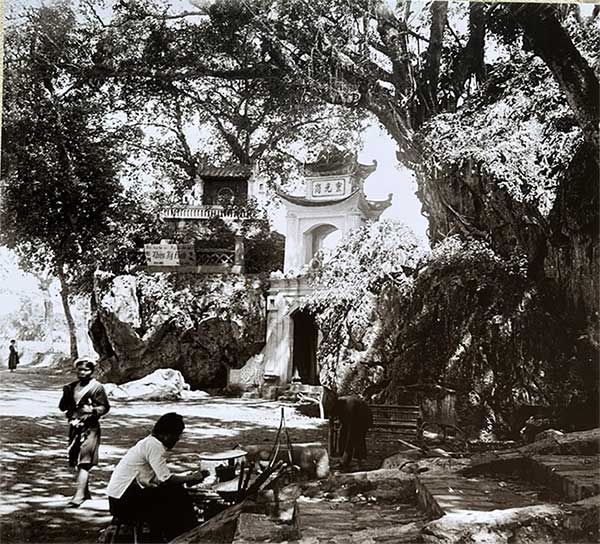
A vendor selling sugarcane in front of a temple before 1915 is part of over 30 black and white photographs showcasing the streets and markets of old Hanoi, displayed at the Cultural and Arts Center at 22 Hàng Buồm from April 21 to June 3. This event is part of the Photo Hanoi’23 International Photography Biennale organized by the French Institute in Vietnam, taking audiences back in time to early 20th-century Hanoi.
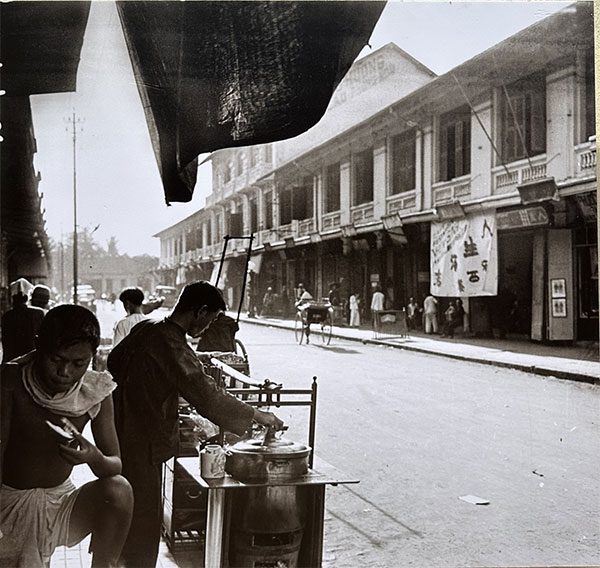
A food stall selling steamed dishes in 1930. The works in the exhibition were created by French photographers during their time in Vietnam from 1915 to 1955.
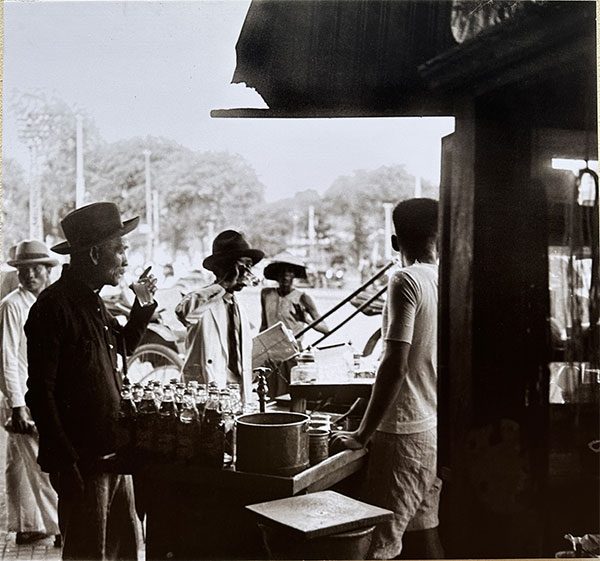
A lemonade stand on the sidewalk in 1930.
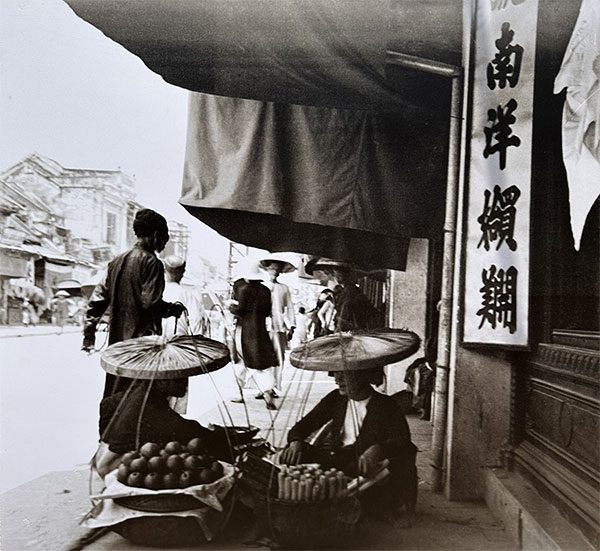
A fruit and sugarcane vendor in the Old Quarter before 1930. According to Baron, an English traveler who visited Hanoi in the 17th century: “Thăng Long has many markets but still has street vendors. They sell goods produced by themselves.”
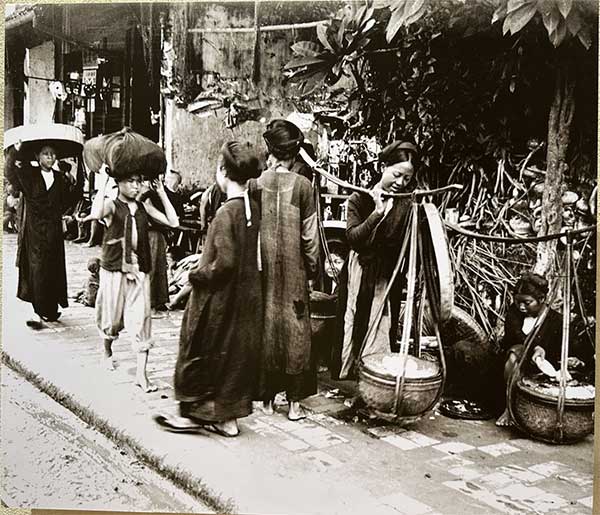
Women selling food on street carts before 1932.
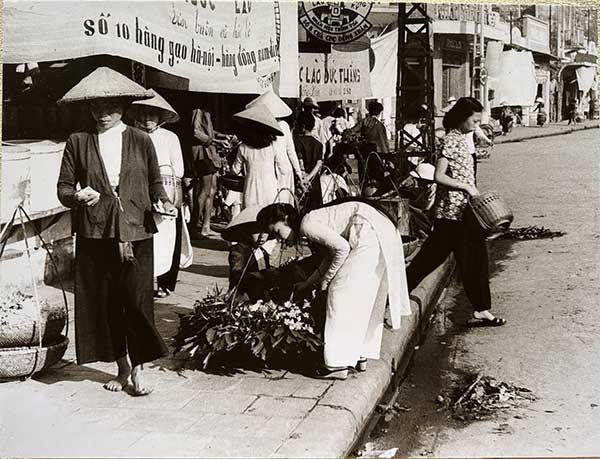
Flower vendors on the sidewalk near Đồng Xuân Market in 1951. The market was established in 1890 to consolidate Bạch Mã and Cầu Đông markets, becoming one of the largest markets of the time. The poem “Xẩm chợ Đồng Xuân” mentions: “Hanoi, like a fairy cave/ At six, all lights go out, far and near/ The happiest place is Đồng Xuân Market/ Each season brings its own delights, near and far, come to buy.”
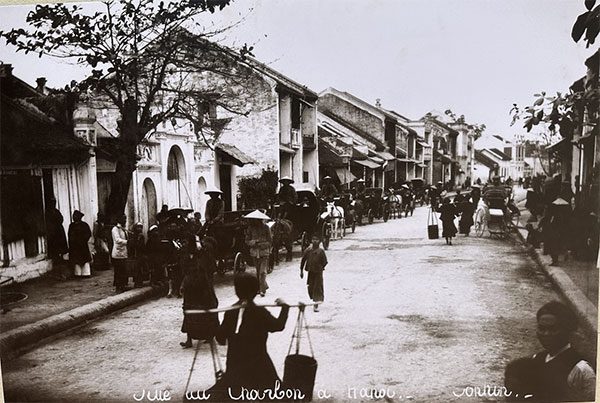
Hàng Than Street in 1951 was bustling with horse-drawn carriages, cycle rickshaws, and women carrying goods. During the French colonial period, it was named Rue du Charbon, featuring ancient houses and numerous temples.
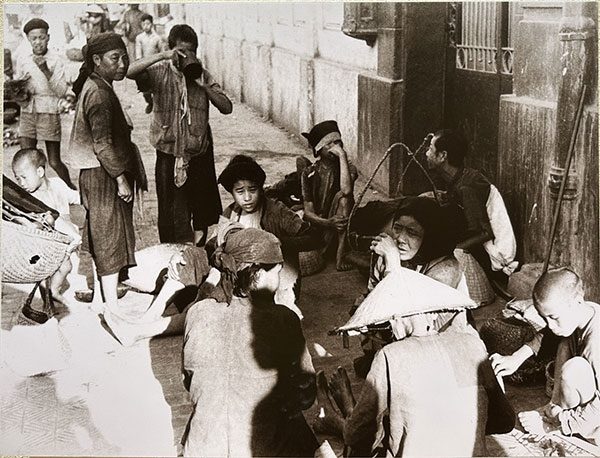
Street vendors resting near Đồng Xuân Market in 1951. According to Olivier Tessier (École française d’Extrême-Orient) – a scholar who spent many years studying Vietnamese culture, street vendors in the past primarily came from villages surrounding Hanoi.
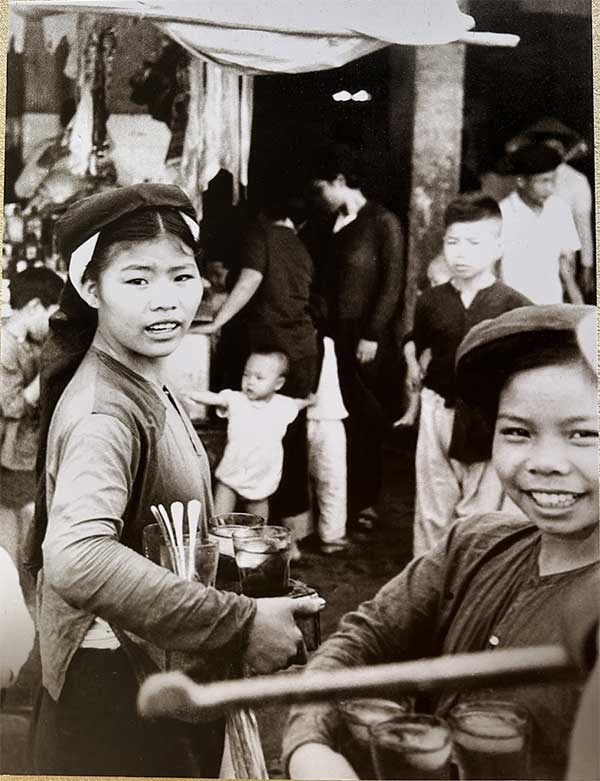
Children selling pomegranate syrup near Đồng Xuân Market in 1951. Paul Bourde – a correspondent for the newspaper in Bắc Kỳ in 1883 – described: “Hanoi has no covered markets, nor designated places for trading. The whole city transforms into a vast outdoor market. Every six days, a market is held. Merchants and craftsmen from surrounding villages come, and the streets are filled with people.”
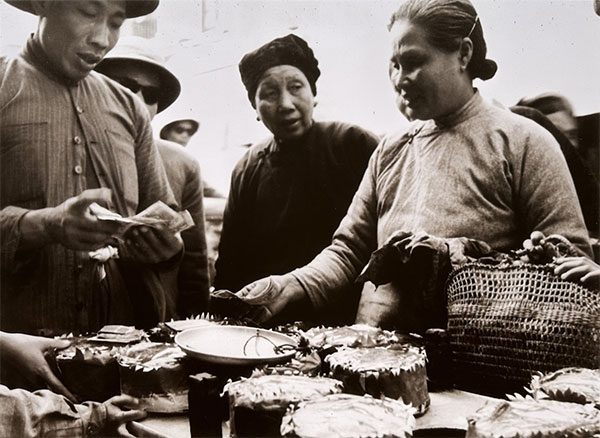
A candy stall during the Year of the Goat Tet celebration in 1955. This was the first Tet after the French colonizers were completely expelled from Vietnam.
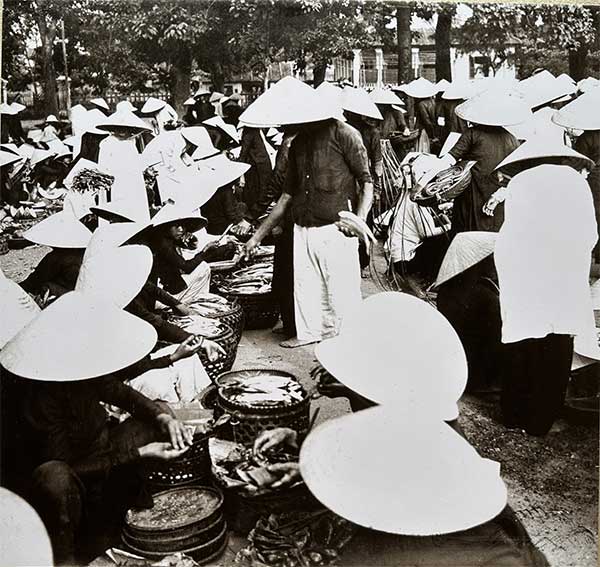
The fish market section in 1955. People used baskets woven from bamboo and string to hold the fish.

People enjoying phở from street vendors near Hoàn Kiếm Lake. Ms. Isobelle (62 years old, from France) expressed her delight while admiring images of old Hanoi. “After many decades, everything has changed so much. Back then, everything seemed simple yet peaceful. One thing remains unchanged is the street vendors. I used to buy fruits and green rice flakes from them; it was truly delightful,” she said.


















































